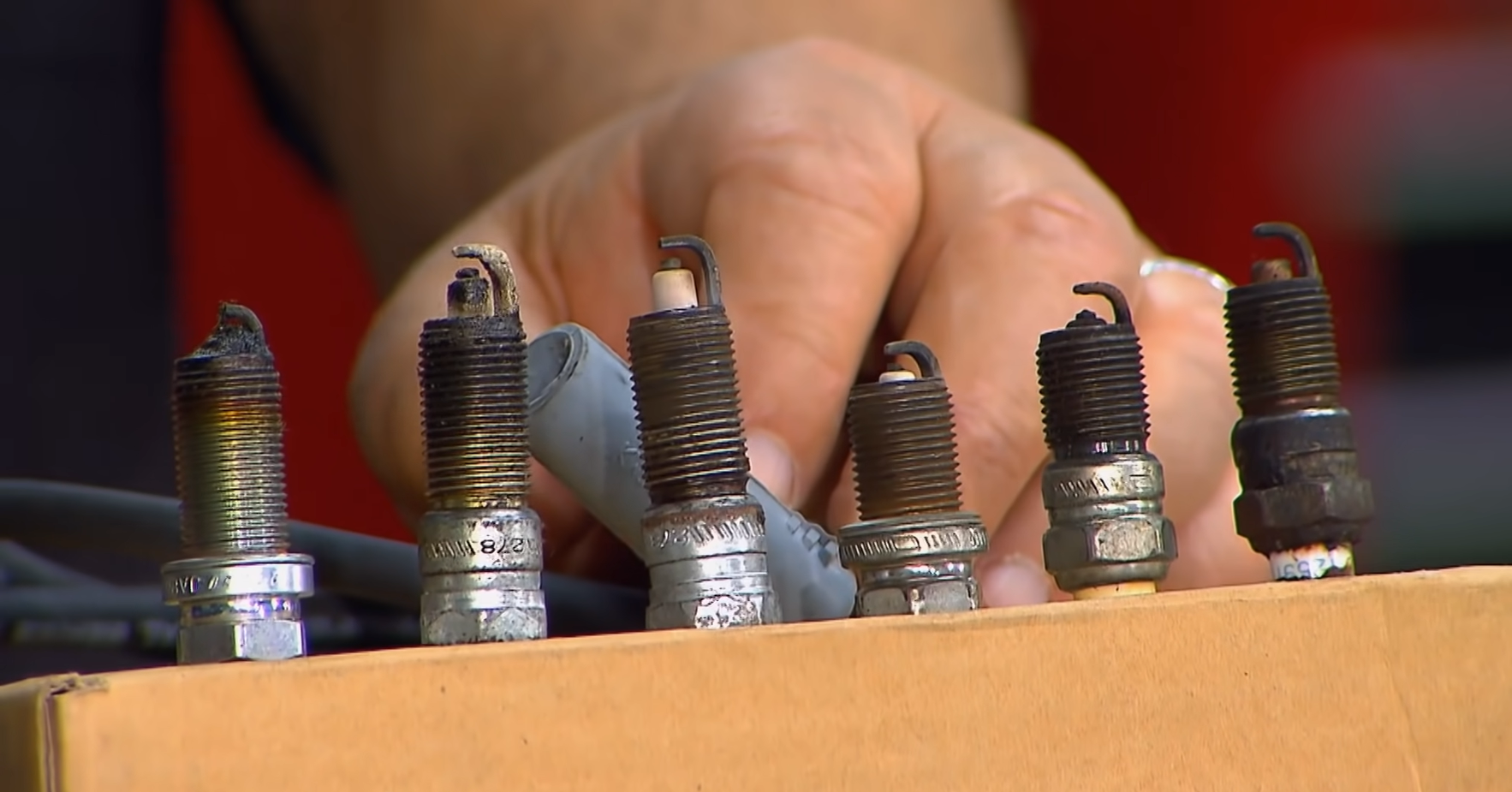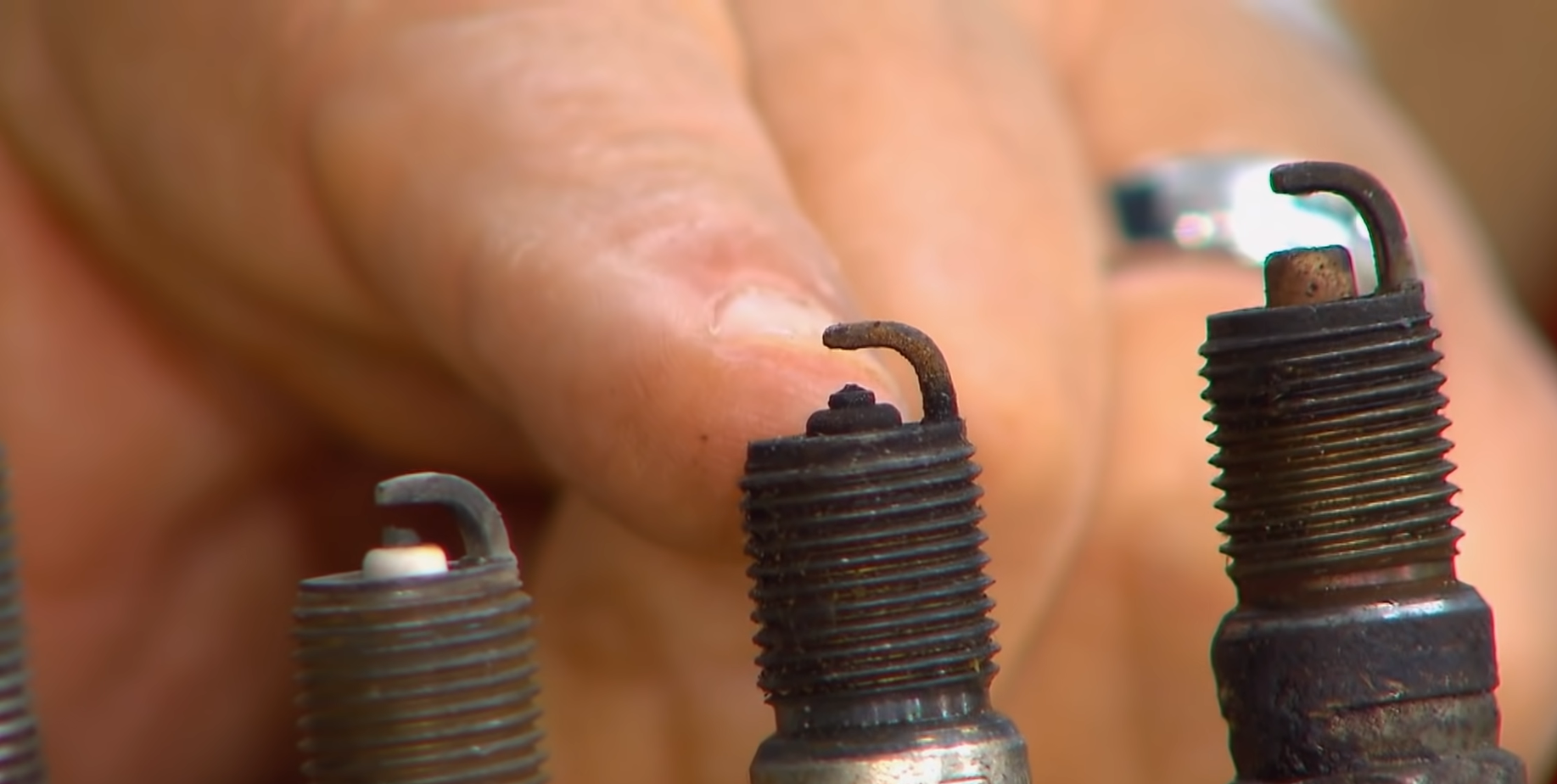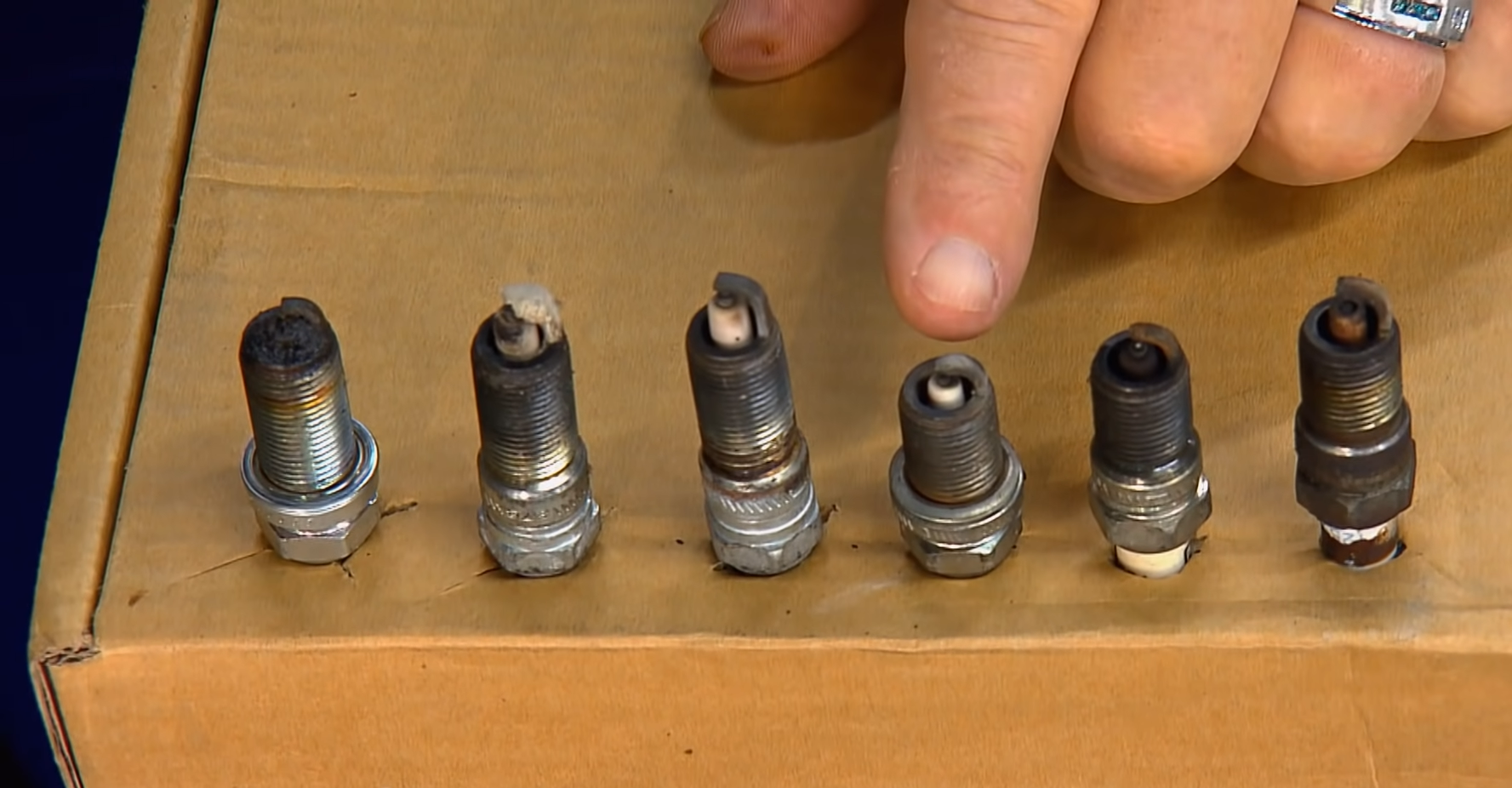Spark plugs have a crucial function to play in the operation of your vehicle. These are involved in the combustion of the engine’s air-fuel mix, creating a controlled explosion that drives the pistons and powers the car. This essential function enables the car to start and run efficiently. However, if you ever notice your spark plugs turning black, it could be a sign that something isn’t quite right with your vehicle.
Black spark plugs may indicate various underlying issues, ranging from simple to complex. One possible cause could be an overly rich air-fuel mixture, which means there is an excessive amount of fuel in relation to the amount of air being supplied to the engine. This can result in incomplete combustion and the formation of carbon deposits on the spark plugs, leading to their blackened appearance.
Additionally, a malfunctioning ignition system or incorrect ignition plug temperature rating could contribute to blackened spark plugs. Should the ignition plugs not firing properly or if they are not designed to handle the specific heat requirements of the engine, they may become fouled and turn black.
In conclusion, black spark plugs are not to be ignored as they can be indicative of underlying issues with your vehicle. It is important to address these issues in time to maintain optimum vehicle operation and gas mileage. Regular maintenance, such as checking and changing your vehicle’s plugs according to the vehicle manufacturer’s recommendations, can help prevent these issues from occurring and detect them early.

Reading Spark Plugs
Understanding the conditions of your spark plugs can give you useful information about the general condition and efficiency of your car. By examining the color and condition of a spark plug, you can gain a deeper understanding of what is happening inside your engine.
Conversely, black spark plugs can indicate a range of potential engine problems. The black coloration may be caused by incomplete combustion, excessive fuel consumption, or the accumulation of carbon deposits. These issues can lead to reduced engine efficiency, decreased power output, and increased emissions.
It is crucial to regularly inspect and monitor the color and condition of your spark plugs. This proactive approach allows you to identify and solve possible problems at an earlier stage, preventing further damage and costly repairs. By understanding the significance of different spark plug colors and conditions, you can take proactive measures to ensure the optimal functioning of your engine and extend the lifespan of your vehicle.
In the following sections, we will delve deeper into the various causes of black spark plugs and explore the potential solutions to address this issue effectively. [1]
Checking the Performance of Your Engine
Monitoring the performance of your engine is a crucial aspect of vehicle maintenance. Regular checks can help identify any potential issues before they escalate into serious problems. When assessing your engine’s performance, pay attention to elements such as the engine’s idle speed, throttle response, and fuel economy. If your engine is running smoothly at idle, responding appropriately when you press the accelerator, and your vehicle’s fuel consumption remains consistent, these are all signs of a healthy engine. However, if you notice any abnormalities such as fluctuating idle speed, delayed response from the engine when accelerating, or an unexpected increase in fuel consumption, it may indicate an engine problem. Black spark plugs, in conjunction with these symptoms, could point to a specific engine issue for example, a rich blend of fuel, oil leakage, or failing components, which we will discuss in the subsequent sections. [1]
Getting Started
Before we discuss the potential reasons for black spark plugs, let’s cover the basics of checking and understanding their condition. To inspect your spark plugs, you’ll need a spark plug socket and a ratchet to remove them from your engine. Once removed, examine the color and condition of the spark plug. While a light tan or grayish-brown color indicates a healthy engine, black spark plugs may indicate a problem. The black color could be caused by carbon deposits, indicating excessive fuel consumption or an oil leak. Alternatively, it could be a result of improper combustion due to a rich fuel mixture. In the following sections, we will delve into these issues further.
Normal spark plug
A properly functioning engine has a spark plug with a light tan or grayish-brown color on the insulator tip, indicating a well-balanced air and fuel mixture for complete combustion. If the electrode has no deposits, it means there’s no oil leakage or excess fuel. If your spark plugs show these characteristics, it means your engine is efficient and the spark plugs are working correctly. Regular inspection and timely replacement, following the manufacturer’s guidelines, can maintain engine performance and longevity.
Carbon fouled
When spark plugs turn black due to excess carbon deposits, it’s called carbon fouling. This can happen when the engine’s air-fuel mixture is too rich, causing incomplete combustion. Instead of burning away, the excess fuel creates a carbon deposit on the spark plug. Factors like a faulty fuel injector, malfunctioning oxygen sensor, or dirty air filter can lead to a rich air-fuel mixture. Symptoms of carbon fouling include poor engine performance, difficulty starting the vehicle, and rough idling. A black, sooty deposit on spark plugs is a clear sign of carbon fouling. Addressing the issue promptly is crucial as it significantly affects engine performance and fuel efficiency. Regular maintenance and checks can help prevent carbon fouling and keep your engine running smoothly.
Oil deposits
Black spark plugs can be caused by oil deposits. When there is an engine leak, oil can enter the combustion chamber and coat the spark plugs, resulting in a black, oily appearance. This indicates a problem with internal engine components like worn valve guides, piston rings, or cylinder walls, which can cause oil leakage. Oil-coated spark plugs can lead to negative effects, including misfires, as oil deposits prevent proper combustion. Other symptoms include blue smoke, reduced power, and increased oil consumption. If you notice oil on your spark plugs, promptly investigate and address the source of the leak to prevent further engine damage and performance issues.

Wet
Wet spark plugs, often black and shiny, can indicate various engine problems. This occurs when the spark plug fails to ignite the fuel-air mixture in the combustion chamber. Flooding is a common cause, where excessive fuel enters the engine and saturates the spark plugs, preventing ignition. Flooding can result from over-priming or a faulty injector. Another possibility is the engine running too cold, causing improper fuel vaporization. Symptoms of wet spark plugs include difficulty starting, poor acceleration, and rough idling. Swiftly diagnose and resolve the issue to prevent further engine damage. Regular maintenance checks can help prevent this problem.
Burned
Burned spark plugs are another form of damaged plugs that can cause engine problems. A burned plug, often with a white or gray insulator tip, indicates a lean air-fuel mixture. This imbalance can increase engine temperature, leading to overheating and burning of the plug. Causes of a lean mixture include vacuum leaks, clogged injectors, or a faulty mass airflow sensor. Symptoms of a burned plug include poor performance, difficulty starting, and increased fuel consumption. Address burned plugs promptly to prevent further engine damage. Regular maintenance and checks help detect and resolve issues early, ensuring smooth and efficient engine operation.
Worn electrodes
Worn electrodes on spark plugs can cause blackening and poor performance. The electrode, responsible for igniting the air-fuel mixture, can deteriorate due to heat and regular use. This wear hampers the spark plug’s ability to generate a strong spark, leading to incomplete fuel combustion and carbon deposits. Symptoms of worn electrodes include difficulty starting, poor fuel economy, and decreased engine performance. Promptly replace spark plugs with worn electrodes to prevent further complications. Regular checks and following the manufacturer’s recommended replacement intervals maintain engine performance.
Broken electrodes
Broken electrodes on spark plugs can cause severe engine problems. The electrode is crucial for creating the spark that ignites the air-fuel mixture in the combustion chamber. If it’s broken, it disrupts the ignition process, leading to misfires and inefficient combustion. This affects engine performance, fuel economy, and can damage other components. Broken electrodes can occur due to excessive heat, incorrect gap, or physical impact. Visible breakage or hidden damage can be detected through engine symptoms. Replace spark plugs with broken electrodes immediately. Regular inspections and maintenance prevent such issues for optimal engine performance.

4 Main Causes of a Spark Plug to Turn Black and the Best Ways to Fix Them
Extensive Amount of Carbon Growth
Excessive carbon buildup on spark plugs can greatly impact engine performance. This condition, known as carbon tracking, often occurs when fuel doesn’t fully burn. Factors like rich fuel mixture, weak ignition spark, or low engine temperature contribute to incomplete combustion. Unburned fuel forms carbon deposits on spark plug electrodes, leading to misfires, reduced fuel efficiency, and increased emissions. Severe cases can result in complete spark plug failure. Address underlying issues causing incomplete combustion by replacing affected spark plugs and ensuring proper air-fuel mixture. Regular maintenance and inspection of the ignition system can prevent excessive carbon buildup, keeping spark plugs clean and the engine running smoothly.
Too Much Heating
Overheating can cause spark plugs to blacken. It occurs when the engine runs too hot, leading to excessive heat on the spark plugs. This can happen due to aggressive driving, a malfunctioning cooling system, or using spark plugs with the wrong heat range. If the spark plug gets too hot, it can cause premature fuel ignition, known as pre-ignition, which can damage the engine. Overheating can also result in melted electrodes, causing misfires and poor engine performance. To prevent further damage, address the underlying cause of overheating by checking the cooling system, adjusting driving habits, or using the correct spark plug. Regular engine checks help detect and prevent overheating issues.
Dirty or Jammed Air Filter
A dirty or jammed air filter can contribute to blackened spark plugs. The air filter cleans the air entering the engine and controls the air-fuel mixture. If the filter is dirty or clogged, it limits air intake, resulting in a rich fuel mixture. Too much fuel and insufficient air cause incomplete combustion, leading to carbon deposits on the spark plugs, turning them black. Additionally, a dirty air filter can allow dirt and particulates into the combustion chamber, potentially fouling the spark plugs. Regularly checking and replacing the air filter maintains the proper air-fuel mix and keeps the spark plugs clean. If spark plugs consistently blacken and the air filter is dirty, consider inspecting the engine and air intake system for potential issues.
Excessive Fuel Mixture
An excessive fuel mixture, known as a ‘rich’ mixture, can cause blackened spark plugs. When the air-fuel balance leans towards more fuel, incomplete combustion occurs, leading to carbon deposits on the spark plug’s electrodes. These deposits disrupt the plug’s function, causing misfires, poor engine performance, and decreased fuel efficiency. This condition can also result in increased emissions. Reasons for a rich fuel mixture may include incorrect fuel injector settings, a faulty oxygen sensor, or a malfunctioning mass airflow sensor. Regular checks and adjustments of the fuel injection system are necessary to prevent excessive richness. If spark plugs consistently turn black due to a rich fuel mixture, it’s advisable to have a professional inspect and address the underlying issue. [2]
Best Ways to Prevent the Spark Plug from Getting Black
To maintain spark plug health and prevent blackening, follow these strategies:
- Regular Inspection: Check for damage or wear regularly to address issues before they worsen.
- Correct Spark Plug Selection: Use the right spark plug type for your vehicle to avoid overheating.
- Maintain Optimal Air-Fuel Mixture: Adjust the air-fuel mixture to prevent rich mixtures.
- Keep the Engine Clean: Regularly clean and maintain the engine to prevent carbon deposits.
- Check the Cooling System: Ensure the cooling system functions properly to prevent overheating.
- Inspect and Replace Air Filters: Regularly check and replace air filters to maintain proper air-fuel mix.
- Professional Inspection: If spark plugs consistently blacken, consult a professional for solutions.
Implement these strategies for optimal spark plug performance and extended engine lifespan. [2]
Eliminating Black Deposits from the Spark Plugs
If you notice black deposits on your spark plugs, clean them for optimal engine performance. Use a wire brush and spark plug cleaner solvent available at auto parts stores. Gently brush off loose deposits, apply solvent, let it sit, then scrub with the brush to remove stubborn deposits. Be careful not to damage the electrodes. Dry the plug thoroughly before reinstalling it. Inspect for wear during cleaning. If worn or damaged, or if deposits persist, replace the plug. Follow safety guidelines when handling. Seek professional assistance if needed. [2]
FAQ
What would cause spark plugs to be black?
Blackened spark plugs often result from operational failures or maintenance issues in your vehicle. Here are the main reasons:
- Rich Fuel Mixture: If the air-fuel balance leans towards excess fuel, incomplete combustion occurs, forming carbon deposits on spark plugs.
- Dirty Air Filter: A clogged or dirty air filter limits air supply, causing a rich fuel mixture and black deposits on spark plugs.
- Wrong Spark Plug Type: Incorrect spark plugs can overheat and darken if they don’t match vehicle specifications.
- Faulty Ignition System: Timing problems or malfunctioning spark plug wires lead to incomplete combustion and blackened spark plugs.
- Engine Overheating: Excessive engine temperature can blacken spark plugs.
- Oil Contamination: Oil leaks into the combustion chamber cause soot formation, resulting in blackened spark plugs.
Understanding the root cause of blackened spark plugs helps address the issue and maintain optimal engine performance.
How do you fix black spark plugs?
To fix black spark plugs, follow these steps:
- Cleaning: Remove and clean the spark plug using a wire brush and solvent. Gently scrub off black deposits, taking care not to damage the electrodes. Dry the plug thoroughly before reinstalling.
- Replacement: If the spark plug is worn, damaged, or continues to blacken after cleaning, replace it with the correct type for your vehicle to prevent overheating.
- Address Underlying Issue: Identify and fix the cause of blackening, such as adjusting the air-fuel mixture, cleaning/replacing the air filter, fixing ignition system issues, or repairing a leaking oil seal.
If you’re unsure or the problem persists, consult a professional mechanic. Regular maintenance and inspections can prevent spark plug blackening in the future.
Does a black spark plug mean rich or lean?
A black spark plug indicates a rich fuel mixture in your vehicle’s engine. When there is too much fuel and not enough air, the combustion process becomes inefficient, leaving carbon deposits on the spark plugs. These deposits cause them to blacken. Conversely, a lean fuel mixture – with too much air and not enough fuel – usually doesn’t result in blackened spark plugs. Instead, it may cause the spark plugs to appear whitish due to excessive heat generated from the lean combustion process. Therefore, if your spark plugs are black, your engine is likely running rich rather than lean.
Can a bad coil cause black spark plugs?
Yes, a faulty coil can cause spark plugs to blacken. The ignition coil converts low voltage from the battery into the high voltage needed for spark plug ignition. If the coil is defective, it can result in weak or inconsistent sparking, leading to incomplete combustion. This leaves black carbon deposits on the spark plugs. If your spark plugs consistently turn black, a bad coil could be a possible cause. Professional inspection is recommended for accurate diagnosis and resolution of such issues.
How do you fix a rich air fuel mixture?
To address a rich air-fuel mixture, consider these steps:
- Inspect the Oxygen Sensors: These sensors monitor unburned oxygen levels in the exhaust and adjust the air-fuel mixture accordingly. If faulty, inspect and replace if needed.
- Check the Mass Air Flow Sensor: This sensor measures incoming air. Cleaning or replacing it can resolve fuel mixture issues.
- Inspect Fuel Injectors: Leaking or malfunctioning injectors can cause excess fuel. Inspect and replace if necessary.
- Look at the Fuel Pressure Regulator: Faulty regulators can lead to high pressure and a rich mixture. Check pressure with a gauge.
- Check for Vacuum Leaks: Leaks can cause excessive air intake, resulting in a rich mixture. Inspect and fix any leaks found.
If uncomfortable with DIY checks or issues persist, consult a professional mechanic.
Can carbon fouled spark plugs be cleaned?
Carbon fouled spark plugs can be cleaned to restore functionality. Remove the spark plug from the engine and gently scrape away carbon deposits with a wire brush or sandpaper. A spark plug cleaner solvent can help dissolve and remove carbon buildup. Thoroughly dry the spark plug before reinstalling. Cleaning may not be a long-term solution if carbon fouling recurs. Address the underlying cause of excessive carbon deposits. If heavily fouled or cleaning doesn’t work, replace the spark plug. Consult a professional mechanic for spark plug maintenance.
Useful Video: How to “Read” your Spark Plugs | Goss’ Garage
Conclusion
In conclusion, blackened spark plugs can indicate various underlying issues in your vehicle’s engine, such as a rich air-fuel mixture or a faulty coil. Addressing these problems requires a comprehensive diagnostic process and potential steps, including examining oxygen sensors, checking the MAF sensor, inspecting fuel injectors, assessing the fuel pressure regulator, and looking for vacuum leaks. While carbon fouled spark plugs can often be cleaned, it may not be a long-term solution if fouling is recurrent. Diagnosing and fixing the root cause is crucial to prevent future occurrences. If unsure or uncomfortable performing these tasks, consulting a professional mechanic is highly recommended. Regular maintenance and timely intervention can extend spark plug life and ensure smooth vehicle operation.
References:
- https://www.championautoparts.com/Parts-Matter/automotive-repair-and-maintenance/how-to-read-spark-plugs.html
- https://editorsvine.com/spark-plug-turn-black/












Leave a Review